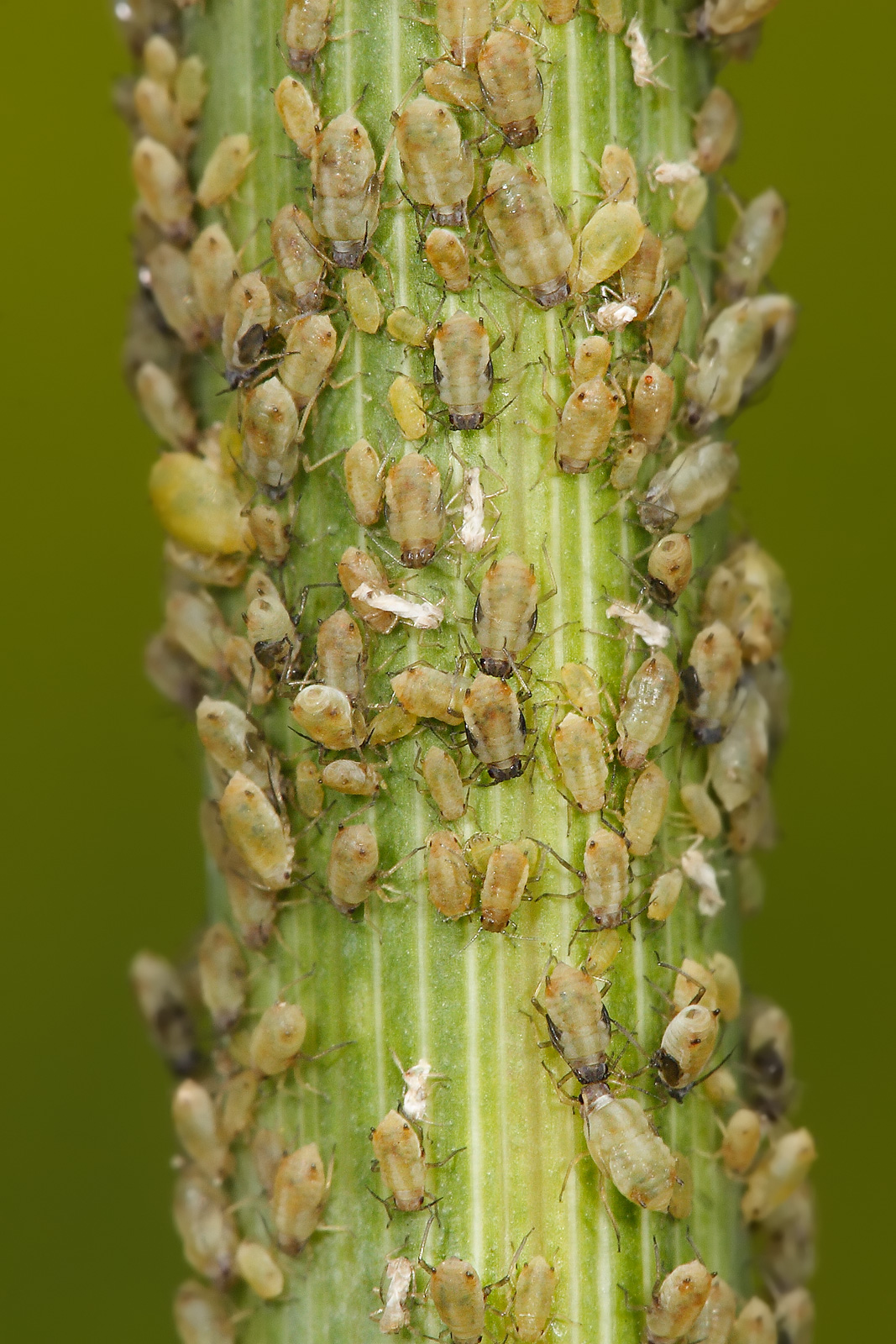Incorporating science into home gardening
 Blanketing a home garden in pesticides poses a clear risk to the humans and animals who dine on it. But when the garden is compared to a human immune system, another problem becomes apparent: Just like antibiotics, pesticides wipe out the “good bugs” with the bad. These helpful predators and parasitoids are called natural enemies and they help to naturally control pests like aphids and caterpillars. Certain plants attract natural enemies and/or deter pests all together and can be used in place of harmful chemicals.
Blanketing a home garden in pesticides poses a clear risk to the humans and animals who dine on it. But when the garden is compared to a human immune system, another problem becomes apparent: Just like antibiotics, pesticides wipe out the “good bugs” with the bad. These helpful predators and parasitoids are called natural enemies and they help to naturally control pests like aphids and caterpillars. Certain plants attract natural enemies and/or deter pests all together and can be used in place of harmful chemicals.
One of the most problematic pests in gardens is the aphid, and one of the aphid’s main predators is the ladybug (also known as ladybird beetles). Both larval and adult ladybugs feed on aphids, making them a prime candidate for controlling aphid populations.
The benefits of dill and other plants in the parsley family (Umbelliferae) and the sunflower or daisy family (Compositae) are not limited to attracting ladybugs. Lacewings—which feed on aphids, caterpillars and a number of other pests—and parasitoid wasps, also natural predators of aphids and caterpillars, are attracted to these plants.
Specifically, parasitoid wasps are attracted to the chemical combination released by the plant and caterpillar saliva. And once there, the wasps do not actually eat the aphids; as their name suggests, they use the aphids for reproductive purposes. Female parasitoid wasps oviposit eggs into the aphids or other suitable pests, especially caterpillars. Once the egg hatches, the larva emerges and kills the host. As an author on the blog Appalachian Feet explained about a parasitized caterpillar:
If you see rice-like cocoons pop up on the back of a caterpillar you can be sure its life is nearly over. Don’t destroy the cocoons! They will hatch into adult parasitic wasps that keep the cycle going.
So what happens when two predators are seeking out the same prey? A study published last year in Environmental Entomology showed that ladybugs fed on healthy and parasitized aphids alike (see the above photo of a larval ladybug feeding on a parasitized aphid for evidence). Einat Bilu and Moshe Coll from the Hebrew University of Jerusalem discovered that, despite variations in nutritional value of parasitized aphids, ladybug larva did not discern between aphids. Interestingly, it took the ladybug larva longer to feed on parasitized aphids, causing a reduction in the number of aphids consumed and eventually leading to a decrease in body weight during the pupal and adult stages.
That aside, if the garden is simply infested with aphids, planting dill can attract both predators and potentially eradicate the pests. The predators will likely go elsewhere looking for a new food source should the aphids disappear; however, keeping nectar-rich dill and similar plants in the garden should ensure they revisit, and when they do, they will check if caterpillars and aphids pop back up.
Another beneficial plant is the geranium. U.S. Department of Agriculture, Agricultural Research Service (ARS) scientists discovered just how helpful these plants were in controlling Japanese beetle populations. The beetle feeds on nearly 300 plant species, including ornamentals, soybean, maize, fruits and vegetables. However, according to the researchers in a USDA article published in March:
[W]ithin 30 minutes of consuming geranium petals, the beetle rolls over on its back, its legs and antennae slowly twitch, and it remains paralyzed for several hours. The beetles typically recover within 24 hours when paralyzed under laboratory conditions, but they often succumb to death under field conditions after predators spot and devour the beetles while they are helpless.
In the end, it is best to learn a bit about the pest before buying an all-purpose insecticide. Some pests can be eradicated, or at least controlled, with simple and inexpensive tricks. Slugs, for example, are naturally attracted to the odor of yeast. Leaving behind the dregs of unfinished beer—this can be accomplished by pouring the last sips of beer into an emptied yogurt container and burying it so the opening is at ground level—is an effective way to catch and kill stray slugs. There are plenty of naturally-occurring options to consider before resorting to chemical warfare in the garden.
Please share your own ecological tips for home gardening!
Photo credit (ladybug larva): Copyright Sharon S
Photo credit (aphids): Fir0002
Bilu, E., & Coll, M. (2009). Parasitized Aphids Are Inferior Prey for a Coccinellid Predator: Implications for Intraguild Predation Environmental Entomology, 38 (1), 153-158 DOI: 10.1603/022.038.0119
